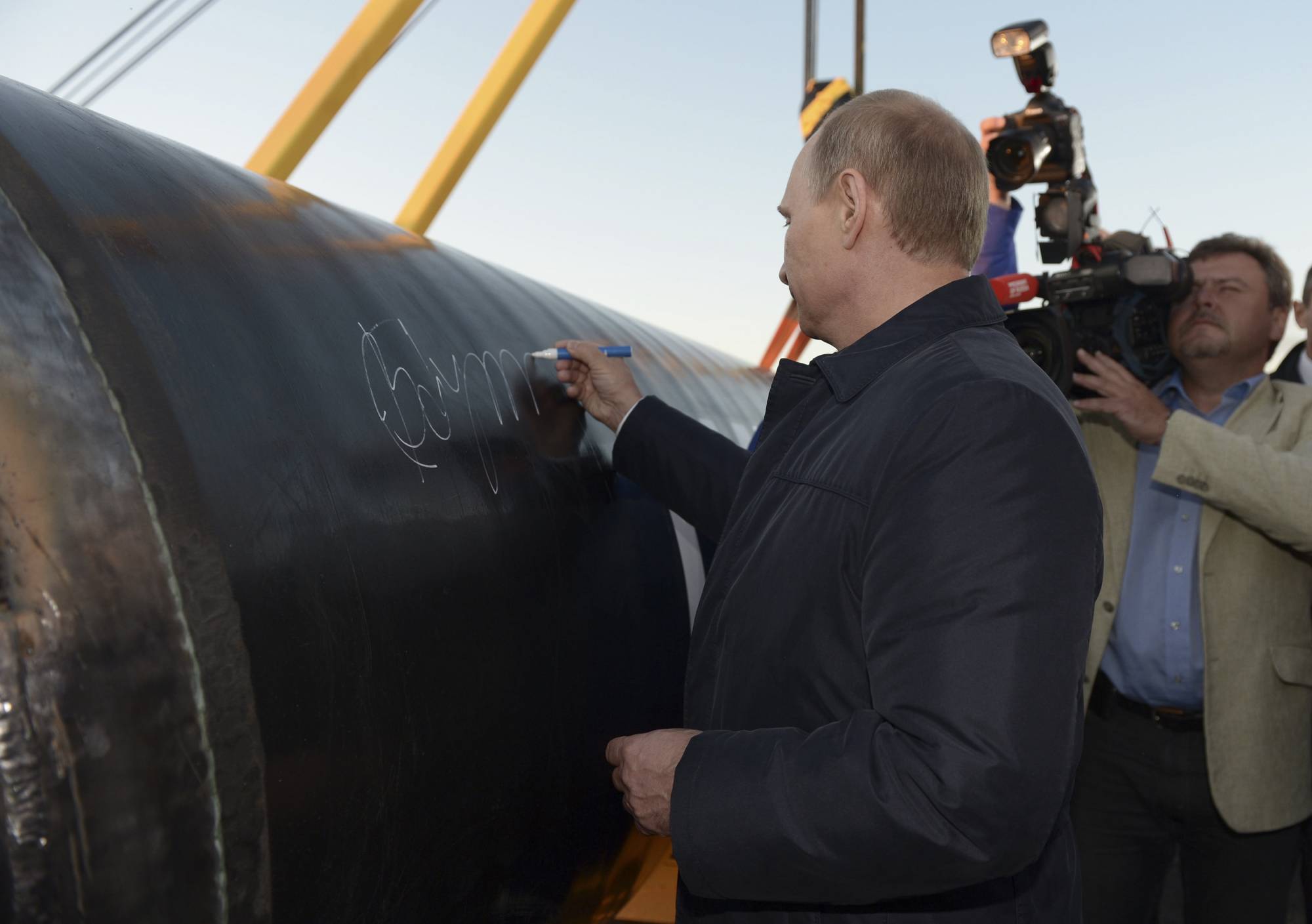Are pipelines built to threaten democracies, or befriend authoritarians? Judging by the responses to Russia’s two biggest gas export projects, it depends where you are.
In Europe, the Nord Stream 2 pipeline, intended to double Moscow’s direct export capacity into Germany to 110 billion cubic meters a year, has become caught up in geopolitical rivalry over eastern Europe. Approval for the project has been delayed for about six months amid a Russian troop buildup near its border with Ukraine.
The fear of governments in the U.S. and eastern Europe is that pipelines can exercise a powerful form of leverage. If you cut off a nation’s supplies of energy — especially in the bitter winter months — you can bring it to its knees remarkably quickly. The problem for Moscow is they’re hardly precision weapons. Before the first Nord Stream pipe was built a decade ago, almost all of Russia’s gas bound for Europe went through Ukraine. That meant it was hard to threaten Kyiv by turning off the taps without also making enemies of European governments further down the line. Having separate channels to sell gas to Ukraine and the European Union means Russia can choose which one it wants to threaten on any given day.


















With your current subscription plan you can comment on stories. However, before writing your first comment, please create a display name in the Profile section of your subscriber account page.